Africa, often referred to as the cradle of life, is renowned for its rich biodiversity and iconic wildlife. From the vast savannas of the Serengeti to the dense rainforests of the Congo Basin, the continent is home to an incredible array of mammals, many of which rank among the largest in the world. In this comprehensive exploration, we delve into the realm of Africa’s largest mammals, uncovering their unique characteristics, habitats, and conservation status. Join us on a journey to discover the majestic giants that roam the diverse landscapes of Africa.
Africa’s 10 Largest Mammals
1. African Elephant (Loxodonta africana)
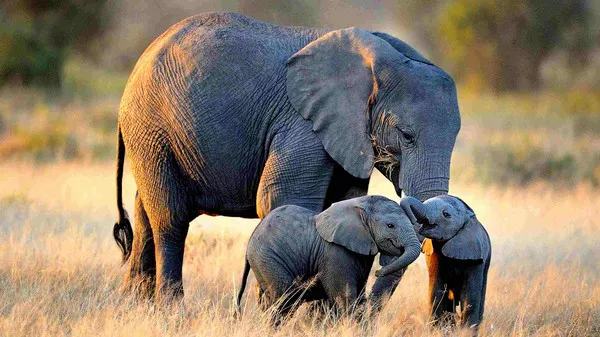
The African elephant is the largest land mammal on Earth, with males reaching heights of up to 4 meters at the shoulder and weighing as much as 6,000 kilograms or more. These iconic giants inhabit a variety of habitats across sub-Saharan Africa, including savannas, forests, and wetlands. Known for their distinctive trunk, large tusks, and social behavior, African elephants play a crucial role in shaping their ecosystems and are considered keystone species. Despite facing threats such as habitat loss and poaching for their ivory, efforts to protect and conserve African elephants are underway, with protected areas and conservation initiatives helping to safeguard their future.
2. African Buffalo (Syncerus caffer)

The African buffalo, also known as the Cape buffalo, is one of the largest bovid species in Africa, with males reaching weights of up to 900 kilograms or more. These formidable herbivores inhabit a range of habitats, including grasslands, woodlands, and swamps, where they feed primarily on grasses and other vegetation. Known for their robust build, distinctive horns, and group behavior, African buffaloes are highly social animals that form large herds for protection against predators. Despite facing threats such as habitat loss and hunting, African buffaloes are still relatively widespread across the continent, with populations thriving in protected areas and national parks.
3. Giraffe (Giraffa camelopardalis)
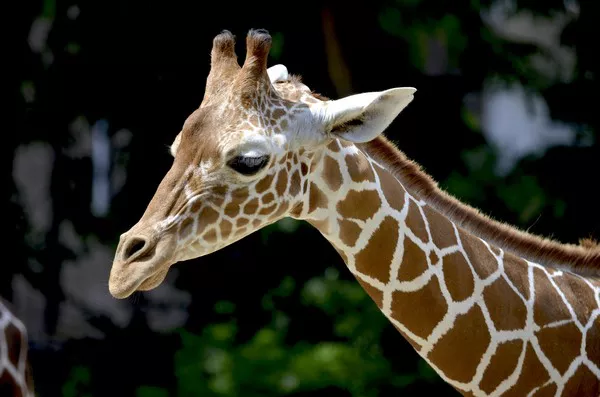
The giraffe is the tallest land mammal in the world, with males reaching heights of up to 5.5 meters or more. These graceful giants inhabit savannas and woodlands across sub-Saharan Africa, where they feed primarily on leaves and twigs from acacia trees. Known for their long necks, distinctive coat patterns, and towering stature, giraffes are iconic symbols of Africa’s wildlife and are revered by people around the world. Despite facing threats such as habitat loss and poaching for their meat and skin, efforts to protect and conserve giraffes are underway, with conservation initiatives focusing on habitat preservation and anti-poaching efforts.
4. Hippopotamus (Hippopotamus amphibius)
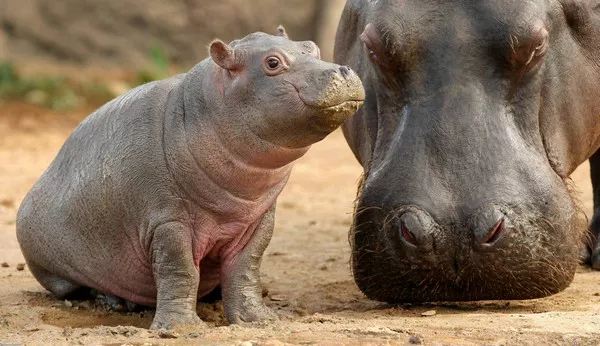
The hippopotamus, often referred to as the “river horse,” is one of the largest semi-aquatic mammals in Africa, with males reaching weights of up to 3,200 kilograms or more. These massive herbivores inhabit rivers, lakes, and wetlands across sub-Saharan Africa, where they spend much of their time submerged in water to stay cool and avoid predators. Known for their barrel-shaped bodies, large mouths, and aggressive behavior, hippos are formidable animals that command respect in their ecosystems. Despite facing threats such as habitat loss and poaching for their ivory teeth, efforts to protect and conserve hippos are underway, with protected areas and conservation initiatives helping to safeguard their future.
5. White Rhinoceros (Ceratotherium simum)
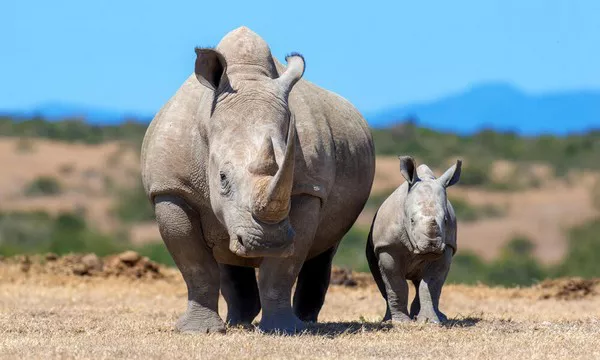
The white rhinoceros is one of the largest rhinoceros species in Africa, with males reaching weights of up to 2,300 kilograms or more. These massive herbivores inhabit grasslands and savannas across southern and eastern Africa, where they feed primarily on grasses and other vegetation. Known for their square-shaped lips, broad bodies, and distinctive horns, white rhinos are iconic symbols of Africa’s wildlife and are revered for their strength and resilience. Despite facing threats such as habitat loss and poaching for their horns, efforts to protect and conserve white rhinos are underway, with conservation initiatives focusing on anti-poaching efforts and community engagement.
6. Lion (Panthera leo)
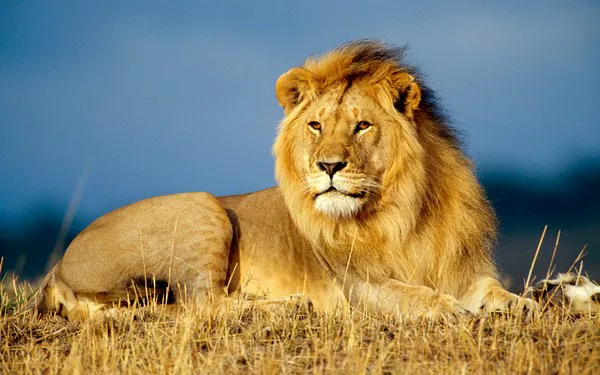
The lion is one of the largest carnivores in Africa, with males reaching weights of up to 250 kilograms or more. These majestic predators inhabit savannas, grasslands, and woodlands across sub-Saharan Africa, where they are apex predators at the top of the food chain. Known for their golden coats, majestic manes, and powerful roars, lions are iconic symbols of Africa’s wilderness and are revered by people around the world. Despite facing threats such as habitat loss and human-wildlife conflict, efforts to protect and conserve lions are underway, with protected areas and conservation initiatives helping to safeguard their future.
7. Spotted Hyena (Crocuta crocuta)
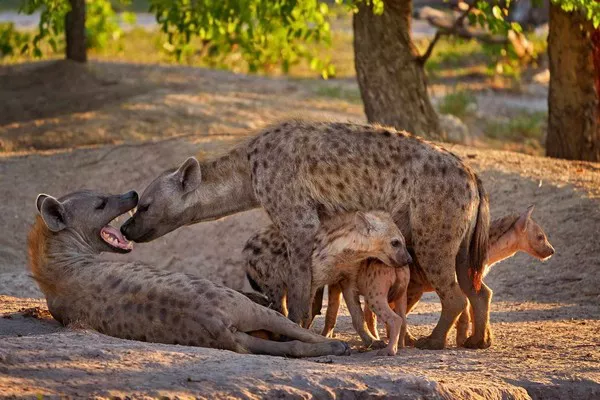
The spotted hyena is one of the largest hyena species in Africa, with males reaching weights of up to 80 kilograms or more. These formidable carnivores inhabit a range of habitats, including savannas, grasslands, and woodlands, where they are apex predators and scavengers. Known for their distinctive spotted coats, powerful jaws, and vocalizations, spotted hyenas play a crucial role in shaping their ecosystems and are highly social animals that live in clans. Despite facing threats such as habitat loss and persecution, spotted hyenas are still relatively widespread across the continent, with populations thriving in protected areas and national parks.
8. African Elephant (Loxodonta cyclotis)

The African forest elephant is one of two species of African elephant, with males reaching heights of up to 2.5 meters at the shoulder and weighing as much as 2,700 kilograms or more. These magnificent creatures inhabit the dense rainforests of central and west Africa, where they play a crucial role in shaping their ecosystems as seed dispersers and ecosystem engineers. Despite facing threats such as habitat loss and poaching for their ivory, efforts to protect and conserve African forest elephants are underway, with protected areas and conservation initiatives helping to safeguard their future.
9. Nile Crocodile (Crocodylus niloticus)
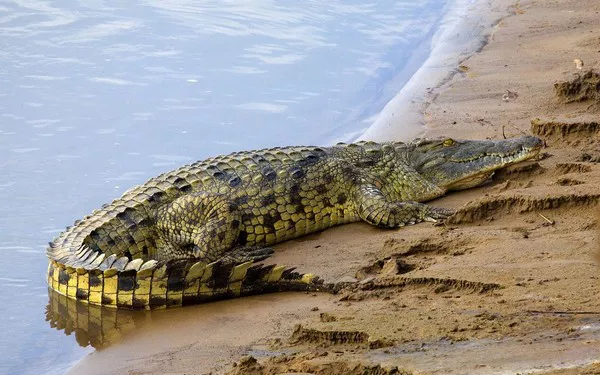
The Nile crocodile is one of the largest crocodile species in Africa, with males reaching lengths of up to 5 meters or more. These formidable predators inhabit rivers, lakes, and wetlands across sub-Saharan Africa, where they are apex predators and feed on a variety of prey, including fish, birds, and mammals. Known for their powerful jaws, armored scales, and stealthy hunting tactics, Nile crocodiles play a crucial role in shaping their ecosystems and are revered by people and cultures across Africa. Despite facing threats such as habitat loss and persecution, Nile crocodiles are still relatively widespread across the continent, with populations thriving in protected areas and national parks.
10. African Bush Elephant (Loxodonta africana)
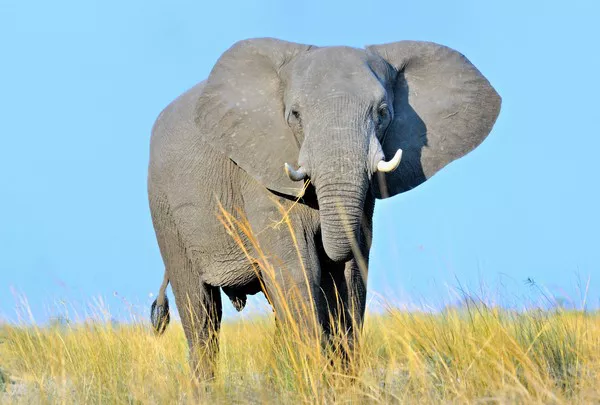
The African bush elephant is one of two species of African elephant, with males reaching heights of up to 4 meters at the shoulder and weighing as much as 6,000 kilograms or more. These iconic giants inhabit a variety of habitats across sub-Saharan Africa, including savannas, forests, and wetlands. Known for their distinctive trunk, large tusks, and social behavior, African elephants play a crucial role in shaping their ecosystems and are considered keystone species. Despite facing threats such as habitat loss and poaching for their ivory, efforts to protect and conserve African elephants are underway, with protected areas and conservation initiatives helping to safeguard their future.
Conclusion
From the towering elephants and giraffes to the formidable hippos and rhinos, Africa’s wildlife is renowned for its diversity and magnificence. Despite facing numerous threats, including habitat loss, poaching, and human-wildlife conflict, many of these iconic species continue to thrive in protected areas and conservation landscapes. As we continue to strive for the conservation and preservation of Africa’s wildlife, let us cherish and celebrate the majestic giants that grace the landscapes of the continent.
You Might Be Interested In:



























